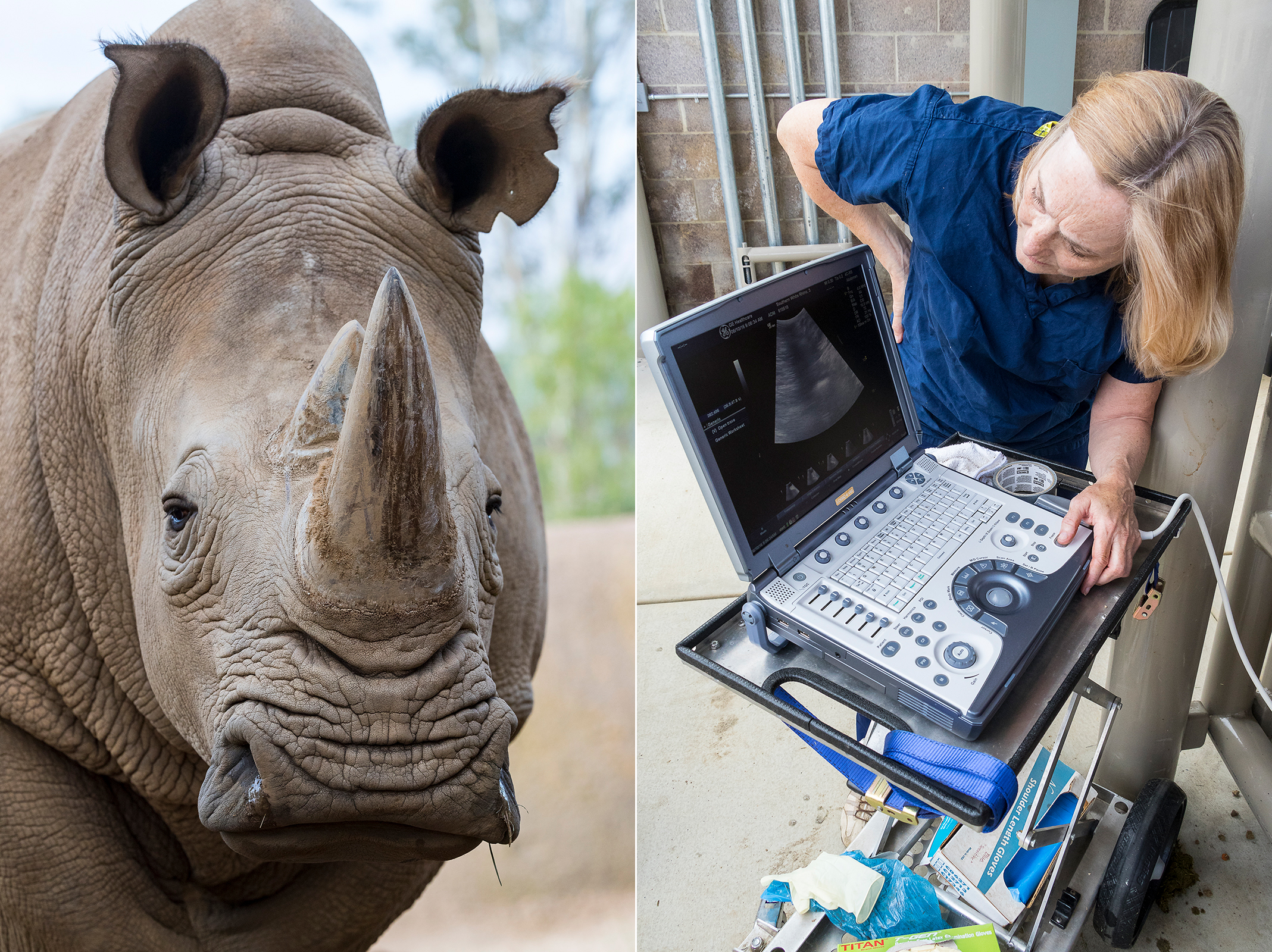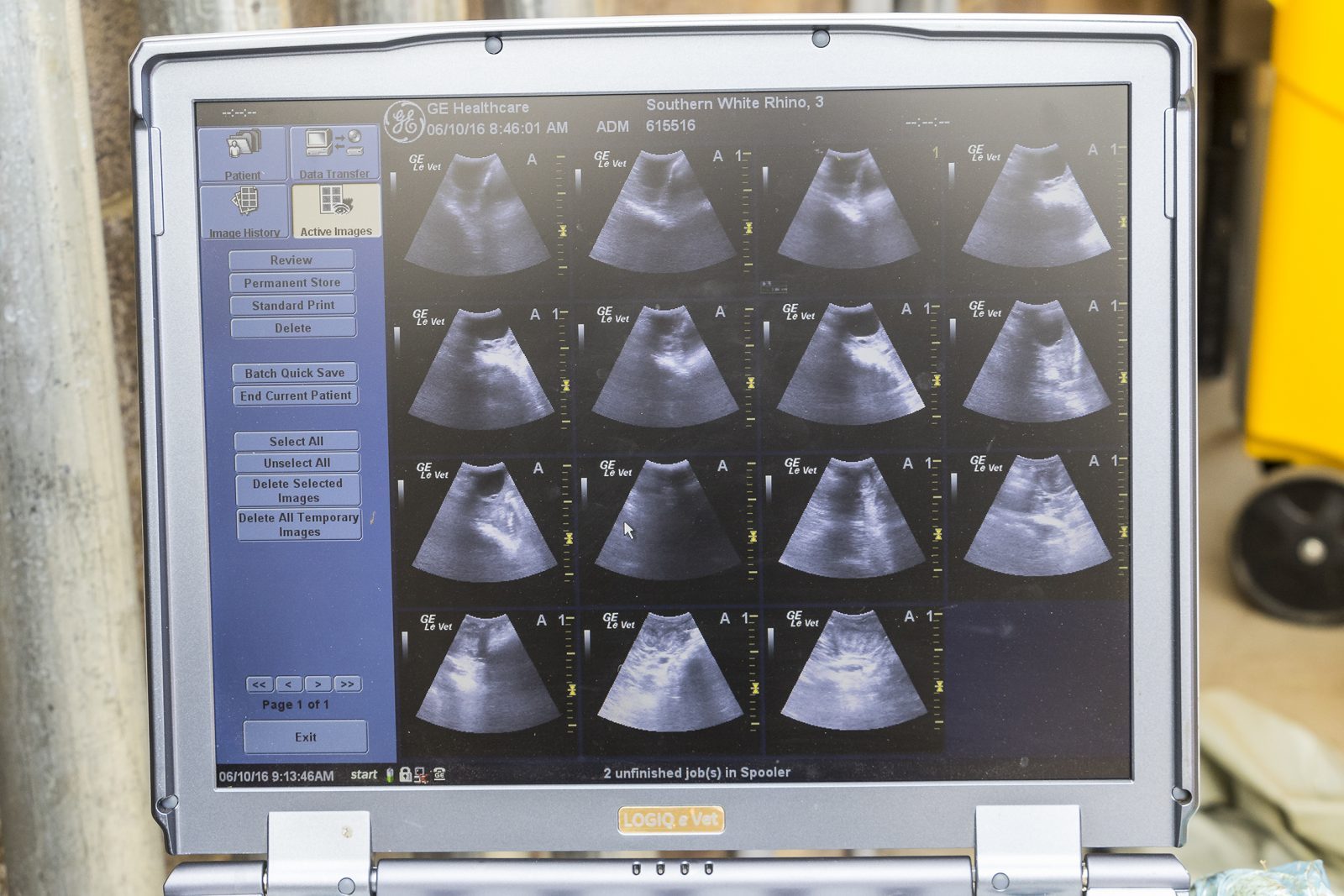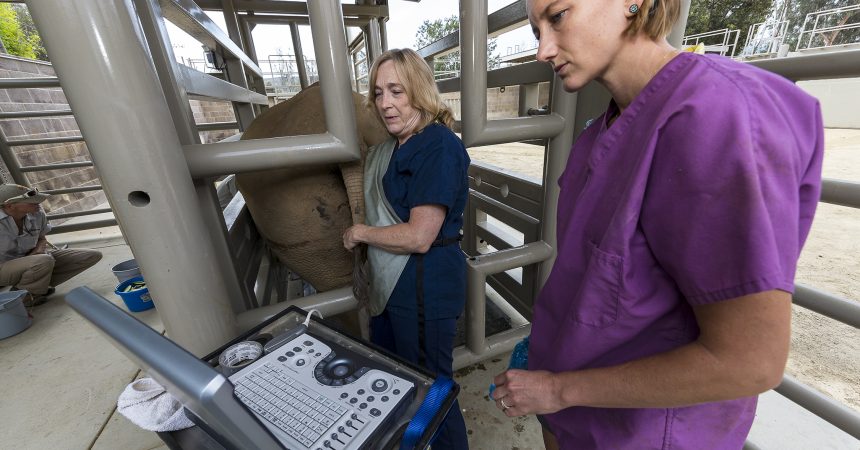Success Further Boosts San Diego Zoo Global’s Efforts to Save the Critically Endangered Northern White Rhino from Extinction
For a second time this year, and just in time for World Rhino Day Sept. 22, researchers at the San Diego Zoo Institute for Conservation Research announced today (Sept. 18, 2018) that they have confirmed a pregnancy in another one of the six southern white rhinos living at the Nikita Kahn Rhino Rescue Center: 10-year-old Amani. The pregnancy, made possible through artificial insemination with sperm from a male southern white rhino named J Gregory, is important to the ongoing work to develop scientific knowledge required to genetically recover the northern white rhino, a close relative of the southern white rhino. Only two northern white rhinos currently remain on Earth and, unfortunately, both are female.
“Many months of intensive animal training, reproductive research and veterinary care resulted in these two ongoing pregnancies from artificial insemination,” said Barbara Durrant, Ph.D., Henshaw endowed director of reproductive sciences, San Diego Zoo Global. “We are following Victoria and Amani closely, continuing to gather critical information about early fetal development and the endocrinology of rhino pregnancy. The team is anxiously awaiting the arrival of our very special babies!”
Rhino gestation lasts from 16 to 18 months. The artificial insemination of Amani occurred July 12 at the San Diego Zoo Safari Park. It was announced earlier this year, in May, that Victoria, another southern white rhino, had become pregnant by artificial insemination. The two females, along with four other female southern white rhinos, were relocated to the Safari Park from private reserves in South Africa in November 2015. Artificial insemination of rhinos has rarely been attempted in zoos, and only a few births have resulted from this procedure in the past.
The San Diego Zoo Safari Park has been fortunate to be able to provide the space and social structure necessary to encourage natural breeding of southern white rhinos, black rhinos and greater one-horned rhinos in zoos. Sadly, the challenges associated with limited gene pools and severely reduced numbers facing Javan rhinos, Sumatran rhinos and northern white rhinos means that some form of assisted reproduction may be their only hope for the future.

A key element of the program at the Rhino Rescue Center is the ability of animal care staff to work closely with the rhinos, building positive relationships, so the rhinos participate voluntarily in procedures like artificial insemination and ongoing monitoring of pregnancies.
If Amani and Victoria are able to carry their pregnancies to term, the first southern white rhino calves born at the Nikita Kahn Rhino Rescue Center could arrive in late 2019.
To reach the ultimate goal of successfully producing a northern white rhino, multiple steps must be accomplished. One of the first steps involved sequencing the genome of the northern white rhino to clarify the extent of genetic divergence from its closest relative, the southern white rhino. The analysis revealed that they are distinct subspecies. Another step requires conversion of cells preserved from 12 individual northern white rhinos in the San Diego Zoo Institute for Conservation Research’s Frozen Zoo® to stem cells that could develop into sperm and eggs—a process successfully begun in the laboratory of Jeanne Loring, Ph.D., of The Scripps Research Institute, with details of the process published in 2011.
Reproductive options include artificial insemination, in vitro fertilization and embryo transfer, with the southern white rhinos serving as surrogates for northern white rhino embryos. The reproductive system of rhinos is very complex, and there is still much to be learned. There are many challenges ahead, but researchers are optimistic that a northern white rhino calf could be born from these processes within 10 to 15 years. This work also may be applied to other rhino species, including critically endangered Sumatran and Javan rhinos.
San Diego Zoo Global has been working on rhino conservation for more than 40 years. To learn more, visit endextinction.org





